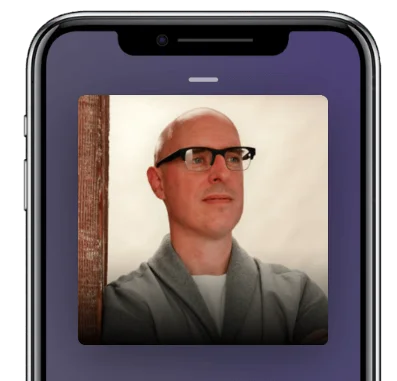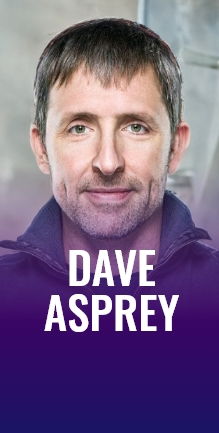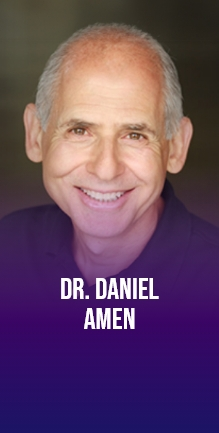Neurofeedback, historically for the past 50 years, has often been used to intervene when things are problematic, seizures, migraines, sleep issues and ADHD. It works well for those things, but it also works well for broad fitness and health. Especially for things that aren’t necessarily diseases, like ADHD isn’t a disease. It’s a regulatory tuning. Your strategies might be more biased towards novelty seeking pattern matching high stimulus, things like that versus being more heads down and sustained attention focused. There are evolutionary reasons for that. We have to only call them pathologies when they’re extreme. Either way, whatever you define in terms of your brain resource needs, the brain is a tractable and trainable system. In the modern era of quantified self and biohacking, it’s the next generation of fitness and brain health is as tractable and as manageable to some extent as your lipid panel, your cardiovascular health, your oxidative stress markers and things like that.
As we’re looking at indicators of performance, we can start to dig into the brain. Like other biohacking, the data we get is interesting and informative and it gives us a picture of what’s going on. Some of it isn’t discrete information with perfectly understood meaning. If you went to your doctor and you looked for the antibody test, it’s discreet. You have these antibodies or don’t you? There’s a process but many things, in a more functional medicine space, are still looking at things in a regulatory range trying to figure out if there’s a hint of a problem because of a drop at functional amino acid or hormones, suggesting a pathway that might be constrained or a resource that’s bottlenecking in some way. In qEEG or brain mapping, which is one of the things we do for neurofeedback, is the same perspective. It’s a functional neuroscience thing where you’re looking at the regulatory patterns in your brain, trying to find the ones that are most statistically unusual on a population level.
With neurofeedback, you go in and tweak those resources. You train or condition or exercise those resources and change the regulatory patterns, the stability of the brain in the new resources over time. If you’re asking what it works for, it’s like asking, “What does exercise work for?” It works for great many things. It can address problems, it can also cause a global increase. Broadly, the way we work, I think about neurofeedback affecting in terms for everybody, you should be able to get benefits in the regulation of sleep, stress, mood and attention. Almost no matter what’s going on or why your mood is having difficulty or stress or attention or your sleep is having problems. We don’t care so much about things that are over time the brain, the physiology has learned and the psychology, because those things are still the brain eventually. We don’t care so much if stuff is an old injury or it’s an unusual quirky brain because the brain changes.
The reasons for why your brain is in the mode it’s in are interesting but not critical in the brain mapping. We come up with a high set of hypotheses like we’ve done for you. We’ll talk about the things that I’m guessing are true about you from a handful of metrics and then you help me understand what your goals are. First of all, what’s valid because not everything I’m guessing about will be true? Then secondly, what’s important? Once you tell me, not top-down, you tell me what’s important to work on and what’s valid data because we believe of your experience, not some pictures and numbers. Then we exercise your brain a few times a week and ideally we create a great deal of change in a few months. We typically do a couple of standard deviations of change on our metrics in three to four months. Clients typically have pretty profound changes in the basics, sleep, stress, mood and attention in the first couple of months.
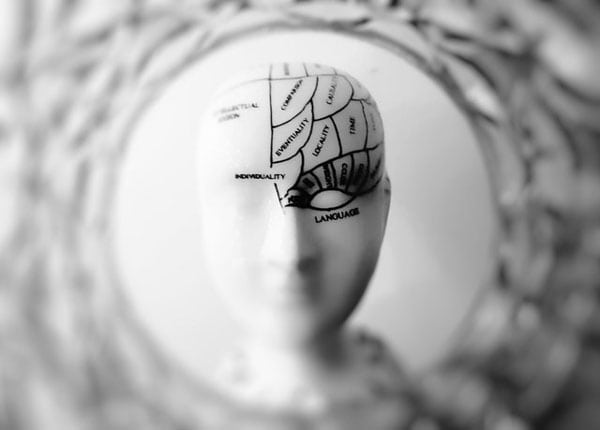
Many clients have other goals: creativity, immune system stuff, high focus, and performance goals that are more either athletic or cognitive, depending on the individual or maybe longer-term things. If you have lots of injuries or maybe you’re somebody with autism or something. It’s not a rapid process if you’re working on the brain more than just the resources, the tuning of the brain. It can be a process from three to six months for most people. In that time, you can get rid of or at least dramatically address bottlenecks in your performance and reach for new performance goals.
This would be not only for people who are healthy and want the next level of performance but also for people who have autism or anxiety disorder or let’s say they maybe have a brain injury or they might have PTSD.
The research is robust for most of those things you mentioned. It’s good on ADHD, sleep issues and anxiety. It’s very good on a seizure. Then other things we know it works on, but the clinical efficacy outstrips the research backing unfortunately, often by decades. It’s one of the few things that can move an autistic brain in my experience. I’ve done a lot of work. My initial training was working with spectrum people with neurofeedback. That was after more than fifteen years working in other aspects of acute mental health, inpatient, outpatient, developmental, substance abuse and everything for years. Then I got into neurofeedback and saw a change. I saw an autistic change. Some of the more developmental ends of the spectrums with no pun intended, in terms of people’s difficulty were things that were changing in months in this neurofeedback center. I got my first job in Providence, Rhode Island, a place called the NeuroDevelopment Center.
I saw amazing things. I saw ADHD drop away and I saw autism lift and not the autism per se, but things like the sub-symptoms, the perseveration, the sensory integration and the eye contact. Maybe free up some language resources for some people. It’s almost like a fitness perspective as I described but you can also go in and be a little fixing in your perspective. You can do that from physical therapy or personal training and we view it in that way where it’s a little bit mechanical, but it’s also a little sophisticated. It’s not a process that I think should be siloed in the heads of medical and psychological professionals. One of the ways that Peak Brain is a bit different than most neurofeedback places is we want you to define your goals if they’re being met and how they’re being met. If there are new goals you have, what you like or what you don’t like. If you want to be experimental, how hard you want to push. Some of our clients start off with a fixing.
I had this symptom or problem or diagnosis and then move from a fix to a fitness perspective over time. Other ones come in with the fitness perspective, be that creative, athletic or executive fitness. It depends on the individual, but if you have a brain then it will respond to neurofeedback generally. I’ve worked with, at this point, thousands of people and I’ve seen it not budge somebody subjectively in a handful, maybe two or three times. It is much closer to exercise and finding the right exercise for you is the key. Not so much will it change or not.
This is universally applicable. A part of the key here is treating this like exercise and not a one-off. I know you’ve got some strong feelings about 40 Years of Zen as the approach to neurofeedback. I went through 40 Years of Zen and I found a profound impact from that. I can see the benefits of coming in on a regular basis, multiple times a week for a sustained period of time to entrench those changes because I do feel like I lost a lot afterward. Through this week-long process of 40 Years of Zen, basically what I went through was a five-day intensive program. That was mentally and emotionally exhausting but opened up previously unaccessed memories that I had from my childhood from decades ago that were good memories. Also, I felt a lot of resolution to some trauma and so forth. They have these augmented reset processes, ARPs that they put you through while you’re going through these neurofeedback sessions or before. Then you work on that in the pods and I got a lot out of that.
Define your goals if they're being met and how they're being met. Share on XIt was profound and I can see that I need to go back or I need to get some regular regimen. Why don’t you share some of your thoughts around the differences, plus and minuses of 40 Years of Zen? By the way, the two episodes where we talked about 40 Years of Zen are with Dave Asprey, who’s the creator of Bulletproof Coffee and author of The Bulletproof Diet and Head Strong and so forth. We talked about it in that episode. In the episode where the CTO of 40 Years of Zen, Chris Keane and I went deep into that particular technology. We also went into the other company that Chris runs, which is TrueDark. These are glasses that help block the blue light and the exposure that will break down your melatonin. If you’re using devices in the evening hours, that’s a bad idea without having some blue light blocking technology. Please share some of your thoughts.
From my perspective with regards to neurofeedback and the way to get the most out of it, first of all, short and intense courses on neurofeedback can be profoundly shifting, but they are an ordeal. I have a lot of training personally in some ordeal-based stuff; shamanic and ecstatic training historically. An ordeal can be profound. You can get state shifts. In a state shift, you have a shift in consciousness. From a shamanic perspective, you come back to ordinary reality with a shift in what you may have experienced in that extraordinary reality. There are a few programs that are similar to 40 Years of Zen, Biocybernaut, they do Alpha. A lot of the training in neurofeedback are categorized into different styles of neurofeedback. One of those is called Alpha Theta neurofeedback. A lot of the category of what the short intense course programs are doing is around Alpha Theta and Alpha Synchrony. That is a hypnagogic state training process where you’re getting halfway between awake and asleep.
It’s profoundly amazing for people that need it and want it and it can produce this intense release. Some of the things that you can get from their feedback produce a state shift that is so profound. You come out of it with a different perspective and you can unpack stuff and get some awareness. I use Alpha Theta or Alpha Synchrony, depending on when you’re trying to get access to the deep generative wellspring and you’re a little shutdown or you’re a little bit chronically over-aroused. You’re getting so stressed that it’s almost like this glass floor in your mind where you’re cognitive and buzzy and busy all the time. You can’t get down to the nonverbal, more emotive and more generative place. It happens in a lot of people. You also see it when there’s chronic overarousal from a GABAergic from drinking from years. You get this shut down in the pattern in the brain as well. Alpha Theta re-regulates this so profoundly, you can peel back onion skin layers for people and help them get access. It’s a Kinta Metta Meditation or loving-kindness meditation is what you’re doing in some ways or you can do it that way.
I’m a big fan of that style of neurofeedback. It often takes a minimum of about 30 sessions of training for people to build enough of a resource so that the brain takes over. There can be massive state shifts with short courses of training sometimes, but it’s rare. A better metaphor is that you’re working on a resource that is going to be built up enough and a system built up enough so that eventually it takes over regulation. If you go into a physical therapist with a torn knee and you work through a bunch of problems and then your knee is nice and strong, then you’re walking around every day. You’re practicing the regulatory stability and strength of the knee. If you have trouble with sleep onset or maintenance or managing the inhibitory tone of your attention or having fast enough processing speed for accessing memories or a handful of other things that are assessable and obvious and visible and describable subjectively. These resources, if you build enough to become integrated and used automatically. People ask the question about permanence.
The exercise metaphor fails here a little bit because if you stop exercising, you lose 9% of your strength or something per week that you aren’t exercising. It drops off because it’s 9% of the total. It’s a decrease over time. With neurofeedback, we often don’t get this drop off eventually. I view it that you’re using these resources all the time. You are practicing even though you don’t know it. It’s akin to me sending you to the gym and making the curls for months and then saying, “Pick up that heavy thing.” You’re like, “Heavy thing on the ground,” and you pick it up. You don’t think, “Activate left bicep. I got to practice that.” You just pick it up and if your living job was to pick up heavy things all day long, you would maintain the bicep. If your job is sleeping well, sleeping deeply, being flexible, having good inhibitory tone, being vigilant when you need to be, being relaxed when you need to be vigilant and practice those skills every day, that’s what gets reinforced after you built enough of it in the training.
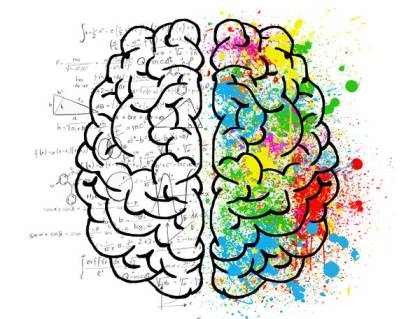
Let’s say somebody has hypervigilance, going for a week to 40 Years of Zen or Biocybernaut.
Hypervigilance wouldn’t be ideal. That’s the other problem I have a little bit. One is a short course. I think it takes 20, 30 to 40 sessions. It takes at least five to six weeks of training minimum. We do three-month programs typically to start. That’s one issue I have technically. The other problem I have is not everyone needs Alpha training. Some people don’t need Alpha training and they won’t do anything. Some people don’t need Alpha training because it’s contra-indicated. If there’s anxiety, if there’s PTSD, if there’s hypervigilance, if there are certain flavors, a brain difficulty. What Alpha Synchrony or Alpha Theta is going to do is exacerbate those problems. If you have deep anxiety that you haven’t dealt with and you aren’t aware of and you do Alpha Theta, it is breaking things open and causing this deep generative wellspring of you to be present, which is great if you’re shut down. You’re alexithymic. You can talk about your emotions. You’re having trouble with creativity. It’s not so good if you have significant anxiety or PTSD that you haven’t dealt with that you’re white-knuckling and holding onto.
It causes that to bubble up and to uber experience that.
It can be an ecstatic experience, a transformation and done in the context of an intense program like 40 Years of Zen. I have some respect for it because it’s potentially transformative. I also think it’s ridiculously powerful. For many people, it may provoke a transformation without a lot of follow-ups or it may provoke for you a performance experience that then wears off because of the five, ten or fifteen sessions of actual training you did against the other transformative contact. The training of the resources, it wasn’t a lot of training. It wasn’t enough. While you got a taste of it, it didn’t leave you with access to the resources that you had. Two days after you walked out of there, you probably don’t have some access to those resources you’ve had right afterward.
To be fair to them, I didn’t do my homework. We were told, these new neuro-pathways that we’ve developed over the course of the week, they’re like little flowers. They’re just budding. We need to water them and that means continuing to do meditation therapy sessions. They gave us these different tools to access online like a neuro gym type of thing. I didn’t do those. I didn’t do any of them.
I really would have preferred to just have you come in, sit you down, train you a bunch of times and build the resources and you’ll integrate them automatically. If I take you out of the VW bug and puts you in a Tesla, your driving will change. This is why I don’t treat it like psychology. That’s why Dave doesn’t treat 40 Years of Zen-like psychology because it’s not. It’s technology and it’s powerful, but it’s much closer to a really highly sophisticated workout machine that works out muscles you didn’t know you had. That is a little bit different from person to person. You need someone not only to build your machine for you for the goal you want, but you also need them to adjust it based on what is happening. This is why the mass programs often don’t work as well either because it’s not individualized. I will do Alpha Theta and Alpha Synchrony with people when it’s indicated, when that’s your goal. I typically don’t do it in the first few weeks though. I do regulatory things.
Another category is called SMR, sensory motor rhythm, which is more deeply relaxing. It’s got good inhibitory tone broadly up to the brain. One example, if you’ve seen a cat lying on a window sill watching birds, you’ve seen SMR. That completely relaxed body but like super focused mind. For my cats, they’re like chattering to them. Their body is fairly liquid. It’s inhibited. The mind is inhibited, the intention because it acts on one thing. That’s the opposite of ADHD in some way a high SMR state. Humans make SMR not because we’re predators, but because we use it as a breaking process in the brain, including things like sleep spindles, making the maintenance of sleep happen and being able to control how much we pay attention to our notice, that filtering of an input-output.
You have to be able to marshal your resources and response to the environment. Share on XIf you train up SMR, which is the first neurofeedback that’s usually done, you eliminate anything with instability or a lack of stability on the braking system, like ADHD goes away from most people in 30 or 40 sessions of SMR training. Seizures are dramatically reduced. Dr. Sterman did the first work on this in the late ‘60s. That’s how it was discovered because it reduced seizures from cats. A mistaken experiment where Dr. Sterman was asked to expose cats to rocket fuel by NASA to figure out why astronauts are getting sick and how dangerous it was. He did a dose-dependent exposure study where he looked at with increased dosage, what symptoms would show up. The cat population, most of them had pretty significant seizures. Then a small subgroup refused to have seizures. He couldn’t figure out why until he remembered those cats have been in a previous experiment where they got little squirts of chicken broth in exchange for their SMR.
Since they are predators, this was really obvious and probably an unlikely reason. Dr. Sterman shows this brainwave, “Can I operately condition them? I can.” Back in the subject pool months later, they were seizure-resistant. He worked on his lab assistant that had seizures and reduced hers dramatically. A few years ago, he published a metadata study looking across the field. The average reduction in seizure is more than 50%. 5% of people have cessations of seizures for over a year. It’s a robust obvious effect. I’ve done it a lot. I’ve seen it a lot in my offices. People with developmental issues or injuries that produce some epileptiform stuff or seizure stuff. You can often dramatically dial down the instability. It’s lovely when you can give people the tools to take control of what their brains are doing for them.
I’d rather not be your doctor. I’d rather be your coach, your scientist or whatever the metaphor is. You come in as my personal trainers. That’s how I wanted to deliver neurofeedback. I don’t necessarily want to give you an ordeal. Not everyone needs an ordeal and not everyone needs the particular style of training I might choose for you in a week. If you’re going to do a week with me, I do the short programs. We typically do them in three to five days where we set you up and we send you home with equipment and then we have you trained for several months on your own. Our intensives are short intensives with ongoing training to follow-up. Our homework is a training system and weekly check-ins and logs. We’re having our clients continue to train for at least three months. I feel strongly that you’ve got to do at least 30 to 40 sessions to get a good stable shift in those baseline resources.
You mentioned sleep spindles. I’m not aware of that term and I’ve had episodes specifically about sleep. I had the sleep doctor, Dr. Michael Breus on a great episode. I’d love to know a bit more about sleep spindles.
They’re an EEG phenomenon. EEG is a mysterious space. Unlike most other aspects of science, it’s very top-down. We’re examining phenomena and trying to understand them as opposed to looking at small little measurements and predicting the phenomena. The joke is that in Physics, you plan your experiment for a year and do it an hour and have an answer. In EEG, you gather data an hour and spend a year analyzing it. It’s very complex and we don’t understand a lot about it. Sleep spindles is a feature in the EEG. Essentially, it’s the same frequency as SMR, twelve hertz to fifteen hertz in humans. To back up a little bit for those people who aren’t conversant with EEG, there are different frequency ranges or firing rates of cells. The cortex has cells at right angles to the skull and you can measure those outside of the head. When they’re firing at a certain rate, that’s the rate of the wave. If it’s four times a second, it’s Beta waves. If it’s ten times a second, it’s Alpha waves roughly. They have different functional significance.
SMR is around twelve hertz to fifteen hertz. A lot of the SMRs produced on the Sensory Motor Strip. A strip of tissue from ear to ear. Some of it is output tissue, motor control of the body. Some of it is ascending input tissue or sensory input. That’s integrated and controlled in the middle part of the head and it all goes through a bunch of other things like the cerebellum and thalamus or the brain is integrated through that SM strip and other deep core resources. When you relax your body, the SM strip produces sensory motor rhythm, SMR. Humans do this among other reasons when we are deeply asleep as maintenance. A little blip of that twelve hertz to fifteen hertz that shows up to reinforce the sleep architecture. To keep us in the phase of sleep we’re in. It also has a few other interesting things that happen when we’re asleep.

The twelve hertz to fifteen-hertz spindles on the motor strip causes a 0.9-hertz ripple in the hippocampus. That’s among the processes involved with memory consolidation or turning short in the long-term memory. When you’re deeply asleep and not dreaming, you’re getting this memory consolidation where weak synapses are strengthened and the memories are consolidated if you’re learning things. That process requires that sleep spindle into hippocampal ripple process. The better you’re making sleep spindles when you’re sleeping, the better you’re sleeping essentially. For training up when you’re awake, for humans, the experience of SMR being trained up is getting more inhibitory tone. Having a better ability to pump the brakes. You don’t lose anything necessarily. If you’re an ADHD kid who can hyperfocus on video games for 27.5 hours without a break, you still have that ability or to be wired and healthy seeking your synthetic.
When you train down Theta brainwaves, which are lack of break and up SMR, which is that inhibitory tone, then you end up getting control over the resources you have with a lot more nuanced. It’s like taking an old beat-up car, VW bug or something. If you are ADHD, you have an engine of a Porsche and the brakes and steering of the VW bug. Neurofeedback is tuning up the suspension and steering. You have the same resources that are quite as powerful but now they are more voluntarily under your control.
You mentioned memory consolidation is an important part of our sleep. That happens in deep sleep. Let’s talk a little bit about the different phases of sleep. You have REM sleep, light sleep and deep sleep. How much do you recommend people get of each and what are the main highlights of each of these? I’m using the Oura Ring. I’m wearing that. I track my sleep, my activity levels and so forth with that.
We haven’t talked about your sleep. I’m predicting from your brain maps you don’t get good sleep. Not much deep sleep, not nearly enough. You’re also compensating for it. You’re compensating fine. Your attention resources are working, but you’re struggling through it a little bit. Sleep has stages. Broadly, you can divide them into REM and non-REM. There’s an early stage like when you’re first falling asleep at night, stage one. If I woke you up and asked you during stage one if you were sleeping, “No, I was just thinking. I was reviewing my day.” Usually, it’s a reverie process. You are in sleep in that first twenty minutes in stage one and then you shift into stage two and for the rest of the night, you go two, three, four REM.
Each when you hit REM, it takes up more of the chunk of the sleep cycle. It depends if a person is about an hour, maybe a little longer, maybe 90 minutes for the sleep cycle. The short is about 45. About half of it in the middle of the night is REM and then late in the night, much more of it becomes REM. Maybe this is one of the reasons we experience dreaming in the morning. We have a sense of dreaming, the sense of memory when we’re more lightly asleep. We’re spending more time actively. In the brain, REM stages are also called paradoxical sleep because from an EEG perspective, we’re seeing a lot of Beta waves and the brain looks like it’s awake. Among other things, we’re also seeing a lot of SMR, which keeps the body relaxed because you don’t move during your dreams. Dreaming is not consolidation of memory. It’s a reorganization of tissue in some way. We’re not sure what’s happening or why we dream totally. Consolidation among other places is happening in the dreamless, the very deep sleep. That’s usually stage three to four when you’re in a deep sleep. That’s Delta waves essentially as opposed to the Beta waves dominating in REM.
Dreaming is not consolidation of memory. It's a reorganization of tissue in some way. Share on XYou mentioned the word reverie. I had come across that word watching a TV series that I enjoy, Westworld. I don’t watch much TV but that one I get into it. It’s originally based on Michael Crichton’s writings and there was a movie way back in the day, way ahead of its time.
I used to watch that on Saturday afternoons and reruns that movie.
I remember this term reverie. I’m intrigued to learn a little bit more about that.
The cognitive mind isn’t the only part of your mind or brain. As you fall asleep, one of the first things you lose is that cognitive control, hand on the stick, what you’re thinking about and what you’re reacting to internally. You end up in this hypnagogic state as you’re entering stage one. Just before stage one and the beginning of stage one, you’re in between asleep and awake in many ways. For many people, the experience of this and the benefit of this is shutting off that linear mind and having stuff bubble up. There’s some evidence. Definitely, a theory that one of the reasons we have stage one sleep is so we can categorize the recent memories as we go into a deeper sleep. It says, “This just happened,” and the brain sorts through all the recent stuff and gets prepared to decide if it needs to store it or if it’s a reinforcement of an earlier learning thing that definitely gets stored then.
There’s some memory sorting process probably. It’s also an activation probably of default mode network. This is because the frontal lobe shuts off and default mode networks are often autobiographical musings. Reverie combined with a hypnagogic state transitioning into sleep, produces nonlinear awareness, noncognitive, receptive awareness where stuff bubbles up in that. If you’re thinking about things, if you’re reflecting on some things, you’ve been shooting something all day and you go into stage one sleep, you may have that nonlinear insight process where you get stuff to bubble up and you have those ideas. That’s why Alpha Theta is fun because you can train access and train the reliable dropping into that receptive state or ideas like, “That’s the right answer for that thing I’ve been struggling with.” It’s a fun process, but that is what happens at the beginning of sleep. You go back into stage one at all, unless it’s the first part of the night. Unless you’re asleep is a bit off in some way.
Do you recommend that people take naps or get a regular good night’s sleep?
Get a regular good night’s sleep, generally. Kids and old people will take naps because their sleep is regulated differently. They should take naps probably. Young kids below the age ten or below or maybe younger, just for developmental reasons. The brain should finish lateralizing until the age eight, nine, ten or somewhere in there. It needs more rest because it’s developing faster before that. Beyond that though, it’s more about that you are getting good sleep. To answer your question about deep sleep, probably an hour and a half to two hours would be nice every night or more. If you’re getting about less than an hour, you’re probably not getting very much. A lot of people who have this kind of brain, I’m guessing you’re getting half an hour accumulatively every night or something.

This is interesting because the Oura Ring tells me I get oftentimes an hour, an hour and fifteen, maybe even an hour and a half. I don’t believe it because the Oura ring is not as accurate as something that’s tracking my brainwaves. I used to wear the Zeo sleep tracker. I love that thing. I’m so bummed that it doesn’t work with the new versions of iOS because they went out of business but the app kept working for a while.
It was the only EEG consumer-based headset that’s ever been valid. A good buddy of mine who has since died, Jack Johnstone, who is my qEEG mentor. He helped design the algorithm in the My Zeo for extracting stages of sleep. He was a classic EEG guy. One of the reasons EEG is all bound in the dark ages a little bit is it’s driven by the sleep science. It’s nineteen channel, little electrodes and there’s a whole bunch of constraints in the field that are informed by the sleep science historically because that’s what we’ve learned from. My Zeo was great. There’s not been another sleep tracker that was as good at it.
What about the Neuroon? Are you familiar with that one? The eye mask that has another thing embedded in.
I haven’t seen it. I’d be a little concerned because most of the dry electrodes I’ve seen are quite poor, quite invalid and slow frequencies. That’s what you need to measure during your sleep. With any tool, you should assume imperfection. It’s like a body fat scale. The absolute level of your body fat on a scale, with the inductance or impedance, may not be that accurate but it changes, probably is. If you’re sleeping an hour and a half every night and I’m seeing a lot of sleep deprivation, I’m guessing it’s worse than that. You’re probably right. If it goes up to two and a half hours a night, that’s probably a relatively valid increased percentage-wise. I would guess you’re getting half an hour to an hour on this map chronically.
You mentioned quite deliberately a certain word multiple times, and that is an ordeal. What’s the significance of that word? I’m thinking that it relates to things like Ayahuasca journeys and it’s transformative.
It’s couched in those shamanic, ecstatic languages. That’s where it comes from. Mircea Eliade’s definition of shamanism is doing something to push your mind to the point where you experienced extraordinary reality and come back to the ground later with an insight. That’s what’s informed by that and that’s the context that I’m couching 40 years in. It’s more of an ordeal process, an ecstatic shamanic process in some ways with a lot of high-tech tools.

Is this relating at all to Joseph Campbell’s The Hero’s Journey?
He learned from Mircea Eliade in some ways with what shamanism is. The Hero’s Journey is, of course, a literary tool that may have some practicality. I think basic stuff, we all have consciousness. We all are altered conscious. I don’t believe we have Consciousness. I believe in moments of lowercase c. We are conscious, we are aware but the greatest trick in human brains is that we are able to stitch together moments of awareness into the capital C or maybe the capital I, the self. That’s history, religion and lots of hints. Neuroscience tells us that the self may not be all that existent. It’s a lovely illusion to stitch it together into a sense of self and memory. It’s evolutionary bias to make sure we keep feeding and procreating. Those evolutionary drives have an influence on the cognitive things at a higher human level. It’s important that we don’t forget that we have bodies and they want to do things.
Let’s talk about my brain map.
We did two things in your assessment. We did an attention test, a CPT, continuous performance test. The characteristic of these things generally is that they’re super boring. They also unload your attention typically such as performing at your worst, which I’m guessing you were. This CPT called the IVA, we flashed a number on the screen, one or two. We speak it over the speakers, one or two. Your job is to click the mouse button when you see or hear a one and that’s it. Don’t click the mouse button when you saw either of the two. Since you’re so bored and since it’s providing one number a second, pretty much for over twenty minutes, people make errors and they make inattentive errors and missed the ones. They make impulsive or response control errors and click on the twos. We can tease apart audio versus visual processing with different types of stimuli and see how it performs over time and a few other features. Looking at your attention resources, overall, your attention or successfully clicking on things was great. 110% of average where 100 is the mean and about twelve points is the standard deviation. It’s quite a good performance for attention.
We did drill down into the sub-scales. While your auditory and visual are about the same as each other, you see that there are some resources that are breaking down for attention. We call them vigilance, focus and speed. Speed is how fast you are at each trial. Vigilance is noticing the new things. Are you on? Are you alert? Picking up the change from two to one and the stimulus into audiovisual. That’s an alert or a vigilant event. Your vigilance is quite good at 105%, 103% typical. Your speed was 132%, 128%. Ridiculously fast and really vigilant. Then there’s another metric called focus, which is how well you’re staying on when things don’t change. The one, the auditory or visual one, it was repetitive after several trials. In that, you were at 87% and 97% auditory and visual. Your auditory is 87%. You’re pushing a standard deviation of a bottleneck in your performances for staying on for auditory information when things aren’t changing that much. Now, you can tell your wife that you drift when listening to her and it’s not your fault because your brain seems to work that way.
It’s funny when I went to university, I didn’t enjoy going to lectures. I got way more out of just reading the textbook and I would skip all the lectures and ace the tests.
Your focus for visual is fine, 97%. For auditory it’s 87%. It’s a bottleneck. Vigilance and speed being higher than those means you’re being compensatory. You’d been very quick and very on because you might have missed something. Overall, your performance is superlative. It’s above average at 110, but it’s not that efficient and it might even be better if you weren’t drifting in your focus. We found a bottleneck even though overall there’s no real attention difficulty. The other side, impulsivity, compound score is 96, not too bad. Audiovisual 97, 95, those are fine. The three sub-scales for impulsivity, response control are called prudence, consistency and stamina. Stamina is are you able to re-engage at every trial or are you getting slower and less accurate over time? Prudence is are you able to monitor what you’re doing and adjust as you go or are you being more automatic or impulsive or reactive? Then consistency is the minute to minute performance.
We learn more when we get the results we're looking for. We learn things also when effects don't work. Share on XWe have this compensatory pattern where your stamina is extremely good. 116 for auditory, 107 visual. Your auditory prudence is also quite high at 116, where your auditory consistency is low at 62, visual is fine at 89 or a little low. You’re having some trouble maintaining consistent resources. You’re cranking up the caretaking, the prudence and the stamina. You are really bearing down. You’re cranking those up above average to make up for the fact that at times, you’re being automatic or impulsive or missing things. This impulsivity you don’t quite have control over and you’re trying to compensate. You aren’t quite compensating for it because these are such a pinch here in consistency. We took a database factor, a positive factor for impulsive, hyperactive factors.
The error patterns you’re making are like that of people with ADHD. It doesn’t mean you have that, I don’t mean you don’t. This test is picking up a pattern of behavior performance this day. You might be more impulsive, for instance, if you’re anxious or maybe sleep-deprived, the other reasons for the behavior of impulsivity, but that is the biggest performance bottleneck. You’re showing an impulsive pattern across the visual and auditory. A few of focus issues here. When I see these bottlenecks, where focus is lower than the other two and consistencies are lower than the other two, it usually means that sleep is dragging down and pinching your resources because those are the ones that fail most easily across time being unloaded. I’m guessing that this is not so much an ADHD pattern, although it looks a little like that.
I’m guessing this is a significant sleep issue and then this other thing I’m guessing about two from the brain maps we’re into but that’s my first thought. Across time, sustained is quite good at 112, auditory. Standard deviation is above average. You’re able to not only compensate but compensate too well above average performance. Things were fine. This gets into that question, is this a fix? Is this a fitness? There’s a performance bottleneck. It’s like you went into the gym and they did a fitness assessment. Your left side is a bit stronger than your right. Your quadriceps are not as strong as your roots. It’s not like there’s a big issue but you could get better efficiency, less effort. When these things get trained up, you’ll have the same rough performance, maybe slightly better but it will be less effortful, dramatically less effortful. I’m guessing now you have to bear down and wade through your knee-high mud mentally sometimes a little bit.
One thought here, it came to me and I want to mention it. ADHD or ADD, there’s this concept from back when we were hunters and gatherers, there was another type of person and that was a spotter. I don’t know if you’ve heard this before, but I learned this from Amy Africa who’s got a team of brain researchers, she’s a good friend of mine. She told me that I’m a spotter and that’s I think a much more effective and empowering way to see yourself. Many entrepreneurs have ADD or ADHD because they’re all over the place, but there’s a type of person that kept the tribe alive and that was a spotter who was on alert that knew when the herd was moving and rallied the tribe to move.
I haven’t heard the spotter. I’ve always defined it as either a hunter versus gatherer. The ADHD person is caught in the hunter mode and has resources tuned that way preferentially. If you’re hunting the hardest spot prey or the berry under the leaf or the tiger is about to pounce on you or you’re a warrior. It’s that same kind of you have to be able to marshal your resources and response to the environment. That’s what you see in ADHD people is they go to hyperfocus and play video games for 27.5 hours straight but they can’t sit in a classroom or a boardroom when things are boring for twenty minutes. Not a deficit of resources, a deficit of control over those resources relying on the environment to cue their activation versus internal control. For me, that’s actually just something hunters versus gatherer. It’s interesting, I’ll check the spotter ideas out. I think there’s a normal human resource like you’re saying and framing it that way is important.

I tell kids with it, for instance, that this is basically like a superpower that stuck on and it becomes kryptonite sometimes. A more classic like the Midas touch. Midas couldn’t eat anything because everything turned to gold. It’s a little bit of a double-edged sword. It’s interesting, but I don’t see it as a deficit. I see that you’re pattern matching, novelty-seeking, requiring a wide focus. I do see some things that suggest you weren’t sleeping deeply and there may be some mood difficulty and a few other things going on. Those are probably not super healthy and not typical brain adaptations. They are more your brain reacting to poor sleep, maybe some wear and tear, things like that and maybe some stress. Those are things that are jumping out like, “This is a performance target for you.” The ADHD-ness isn’t a big deal. This test is twenty minutes long. The reason this is tripping up positive factor is that if you don’t have anything that’s truly causing impulsivity, you could control the resources for twenty minutes, but your prudence is so high that you actually are controlling your resources pretty well. There’s something else sapping them. You don’t look all that ADHD to me, it looks like something’s going on and affecting the executive function.
Although I do task switch all the time and it is a lot of effort to stay on one thing for a sustained period of time.
Let’s look at your brain maps and I’ll share why I think that’s true. Look in some colored heads and when they’re green, they’re a typical range. Here’s the bell curve of colors.
This part comes from the qEEG where I put the brain cap. Can you explain that?
It comes with this little cap and we squirt it with it full of gel. Then you sit with eyes closed and eyes open for several minutes each. We then take those resting baseline of your brain, which is pretty stable year-after-year. We compare it to a database of other people your age and get heat maps out of that, that shows how unusual you are compared to the average person your age and thousands of metrics. Some of these rise to the level of, “That might have some meaning.” We go through what we call discriminant. We try to find the statistically likely patterns that are either related to things in the literature or clinical experience that are meaningful from my perspective to performance these goals.
There are usually ten to fifteen things that jump out in the data that might suggest four or five big patterns or symptoms or bottlenecks to our clinical staff. After a brain map, you sit down and go over your most statistically interesting outliers in trying to figure out which are valid and which are important. We think of these things in terms of Z-scores or standard deviations away from the average person your age. A Z-score is a standard deviation of a specific reference population. They are heavily cleaned, the typical population we’re working with to compare you to. Then we care about Z-scores often more than about 1.5. More than 1.5 standard deviation is away from average or a bottleneck shows up. For brainwaves, we often care about positive and negative amounts, but positive are often even more interesting.
Your memory is not great when you're not getting good deep sleep. Share on XThis is about looking at my brainwaves and the difference here from a SPECT scan, which is looking at blood flow. I had both of these done at Amen Clinics. I’ve had Dr. Amen, a great episode. I had him on my show and we talked at great length about SPECT scan and also about qEEGs. That was after I did the brain study at his clinic.
There are two differences. This is electricity and a SPECT scan is blood flow. The other big difference is, qEEG is a normative database comparison. We’re getting data out of this that tell us how unusual things are. The clinical meaning is, “What is that? How important is that? What does that mean?” In a SPECT scan, there’s no norming. It’s purely clinical.
You’re just looking to see if there’s something that might look abnormal.
The only person that reads SPECT scan is Daniel Amen. He’s the amazing genius who have seen 10,000 SPECT scans and glance and go, “I think I see a little bit low activity in the posterior cingulate. That might mean this for you.” He can do that.
He’s trained some people to do it too that are very good.
It’s his bailiwick here. qEEG is just a bit broader. There are several maybe 5,000 or 10,000 of us that can do that. The reason we can do it is because the patterns looking up are statistically unusual marked patterns, not just the raw patterns. You do change day-to-day but you don’t change compared to the population mean all that much. We’re looking at your stuff compared to the population mean. We’re starting some eyes closed. We see a lot of Theta brainwaves in the left-hand side of your head. You’re about 2.5 standard deviations above average for Theta. We often care about Theta more eyes open. We’ll look at that in a moment. It’s also not unusual to have it focal like this when you have high Theta. Having extra slow brainwaves can be a bunch of things.
Brain mapping is more of a prognostic than a diagnostic process. We’re not saying what is true, we’re seeing what might be and what is often true based on the patterns we’re seeing. It may not be true for you. Please be sure to tell me if things aren’t true. I’m guessing about them for the first time without a clinical history, without understanding anything deeply about you. Eyes closed, we often care about the fast frequencies a bit more. Yours are a tiny bit elevated. A tiny bit of elevation at the front midline of some Beta frequencies. A little bit half of standard deviation up, but it is there. Combined with the Theta, it may be meaningful. I’m guessing you have a touch of rumination from this stuff. We might get stuck on something and chew some stuff like a dog with a bone or as long as it’s stuck in your head.
Yes, I do. We actually talked about this in the episode with Dr. Amen. There’s this thing called a diamond pattern that shows up in the SPECT scan.
This is about a half standard deviation, excess Beta and fast Beta on the front midline, which is the anterior cingulate, which is the switcher. When that’s active, you can get high-powered CEOs, you can get OCD, you can get somebody who’s always hyperfocused on stuff. It doesn’t mean it’s in the way for you, but it means that resources showed up as a little bit extra active. That’s one of the ones that I go, “Is this valid?” “It is valid.” “Is it in the way or do you use it? Is it useful?” You can choose to go after this or maybe it’s something you love. The Theta is high a little bit in the same region. That’s why I think it’s more relevant than the statistics would suggest. Beta would suggest that brakes are off or Beta would suggest the accelerators are a bit too on. You’re slightly over accelerated but you’re under-inhibited, under-braked with regards to the amount of Theta. I’m guessing that you have a low level but a somewhat constant style of rumination. It’s not profound but your mind chews at you a lot.
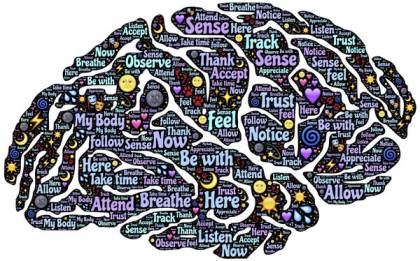
We did a statistical discriminant called traumatic brain injury analysis. We should be very cautious about believing this label. Just because it says the word injury in the page, it doesn’t mean it’s true. We didn’t do a SPECT scan or an MRI or anything else. What we did do is compare your resting baselines and bunch of waves to two databases, a typical and injured population. Then did a statistical analysis about your connectivity and looked for the likelihood that you were like the injured population and it came back as 97.5% likely. This statistic, this discriminant is easily distorted by lots of things including poor sleep. It’s possible all we’re seeing is a sleep issue. It’s also possible we’re seeing a low-key wear and tear event, concussions and etc. Historically, that are maybe overlapping some sleep events, it’s blowing up the statistic. I don’t see a lot of other injury markers beyond the pure statistical one, except for the fact that slow brainwaves are on one side. It’s weird. I’m thinking there may have been an impact on the left side of your head. It doesn’t matter in terms of approaching it with neurofeedback, we would still be able to get the effects we’re looking for, it just would affect your experience of it. If it’s injury-driven, you’re probably very foggy chronically. It might take a little bit longer to make it stay gone with neurofeedback if it’s injury-driven. Any concussions?
Nothing that I can remember, but I’ve had some tinnitus on the left-hand side.
The tinnitus is probably related to this data. Having a persistent slow left side or slow block, I’ve seen before in tinnitus. That’s very likely related to it. I wouldn’t have guessed that per se, but it is a disinhibited ringing of that cortex. It’s over the left side, just behind the left ear, that’s probably your auditory cortex. That’s probably related to it. There is some evidence you can train the ratio of Theta to Alpha or tau with faster Alpha in effect to tinnitus. We should try that for you and see what you notice because it’s a culprit. That’s what qEEG becomes. I would guess a bit of disinhibition, bit of anxiety, maybe rumination, but it’s language before pure auditory. Tinnitus is more of a pure auditory. I would guess more of a receptive language issue where it’s hard for you to filter and follow one person speaking in a room full of people talking.
That is very true.
The tinnitus is probably a function of whatever’s going on that’s causing the receptive language pinch and it’s probably this.
This is all addressable with neurofeedback.
We would expect this to change pretty reliably. It’s all hypothetical. I’m guessing this is an old injury that’s left you a little sensitive to auditory processing stuff. It allowed this to be a little more irritable and built up as a tinnitus problem, but it’s a quite complex model. It doesn’t matter if my model’s accurate, if it suggests protocols, we try those protocols and they work. All we care about is getting the effects we’re looking for. We learn more when we get results we’re looking for. We learn things also when the effects don’t work, “That kind of brain, I’ll try this.” We did the mashing of the clinical law with the science here and then your experience to guide that process.
People have unique experiences of their own resources, their limits, and their goals. Share on XIt does take all three legs of that stool to get good effects. Another reason why short course training is hard to do because you don’t get the effect right away sometimes. You need to try a lot of different things and it’s very individualized and it takes some time to learn. We’d like to have the client helping us understand what they’re actually getting from effects as the final arbiter of truth, not how precisely we can come up with models about what’s happening in your brain. The more specific we get with our models, the less accurate we will always be with the brain.
One thing I’ve never put two and two together on until just now is that I was in third or fourth grade and I slipped and fell while I was pushing a merry-go-round around and I hit and it was pretty bloody. It was bad.
Were you knocked out?
I might have been.
You probably had a concussion and that may be what we’re seeing. It’s interesting, it’s not super important that we’re sure from the point of view of neurofeedback. It doesn’t matter. I’m curious. I care about your history, but that particular facet is interesting more than it’s necessary. Plausible, that’s often the name of the game when it comes to qEEG. Does this plausibly describe some things that might be related to either history or what you care about? It does at this point because of what you just said. That’s a reduced circulation with that stuck slow activity. Some low-key scar tissue might produce reduced circulation. Some low-key wear and tear can produce that.
You also have an increased phase and increased timing like there in the same region. It’s just some problem with that pumping up stuck frequencies based basically. The injury marker, even if we don’t believe it, says there’s something going on. Regardless of the cause, sleep or old injuries, there’s something happening in the afternoon where you have some fog, fatigue and irritability. You feel like you could take a nap. You probably had cognitive fatigue while you’re like, “No more decision making. Leave me alone. I’m all done for the day.” I’m just, “No,” and irritability is a short fuse. All three show up in the afternoon or some?
I definitely get tired and my focus wanes in the afternoon.
That’s probably a function of your sleep. We are now looking at the average speeds of your brainwaves. How fast is your brain? This is literally how fast you are compared to the average person your age. Unfortunately, your Alpha speed which is the resting speed, this is eyes closed. Your Alpha is like the resting speed of your brain. Your Alpha is a couple standard deviations, 2.8 actually. 2.2 there, 2.8 there, 2.22 where it matters and back midline. This is your processing speed. It’s dragged down a couple standard deviations below average. This is I see why. Your Delta waves are faster than average, pushing a standard deviation.
The high base in Betas have some negative numbers, pushing the standard deviation slow or over that, actually slow. You’re not recharging at night. Your Betas are dragging and running slow. The Alpha is the biggest concern for me. It’s 2 to 2.5 standard deviations below average. You’re driving with the emergency brake on in your brain. I’m guessing if it’s bad, you have at least in the afternoon, maybe always, noticeable difficulty with word finding. It’s speed of processing issue, it’s not a memory issue. Don’t be concerned. Your memory’s not great because you weren’t getting good deep sleep. This is your brain being dragged down so much. You can’t reach for the memory and the word is gone before you reach for it. It’s like an old-fashioned sushi restaurant with a conveyor belt. It’s like you can’t reach for the food fast enough so your brain is starving for words.
I had this disempowering thought that my memory was getting worse over time. Then I had this conversation with Amy Africa where she explained how there are different memory gadgets in the brain that store different kinds of memories like I’m good at numbers. I changed that disempowering thought that my memory is bad and it’s getting worse to I’m actually amazing at numbers or I’m probably quite good at memory and I need to change that thought. That was a big shift for me and we discussed this on an episode with Jonathan Levi, he’s a memory expert and we talked a lot about memory and super learning. I would love to have this ability improved where sometimes the word just escapes me.

It’s the speed of processing, not memory for you broadly. Once your sleep’s better, most of your speed of processing should come back and then we can crank it up directly by training at the Alpha speed if you need to make it fast and make it as quick. You do seem like there’s a touch of slow processing speed. It seemed like it’s interacting with you. I’ve worked with a lot of people and it seems like the emergency brakes are attached on. You seem like you’re somebody who should be way faster than you are internally.
I didn’t get enough sleep last night either.
You’ve struck me as very calm every time I’ve met you. I think it might be this compensation like this a little bit burnt out can be even-keeled. This is a little bit more distractible. I’m a high energy distractible guy. You probably internally are a little bouncier than you appear from the outside. Here are the last pages to look at, eyes open data. Your Theta is high with eyes open. We still see that front midline marker from rumination. It’s come up a little bit, eyes open. You can mix up a bit when you can observe things. The Theta is unusual in that it is left-sided. It may be from some wear and tear. It probably means that you’re a bit impulsive. That’s hard to filter. If you look at the ratios of Theta over Beta, which is one of the few diagnostically valid markers at the FDA level for ADHD, it is high. It’s 2 to 2.5 standard deviations at the back of the head.
It’s not ADHD-like though because it’s focal, not diffuse. You wouldn’t have ADHD some places in your brain. It’s how you’re built. It’s not a problem, it’s how you’re tuned. For you, you access Theta because of this left-sided blob that’s stuck on. My guess is that specifically over time, late in the day, it’s hard to stay on visually. You’re visually distracted because it’s in the back of the head, maybe auditorily even worse. You probably have a great deal of distractibility for sensory stuff. For outside world stuff impinging on you, because of where the Theta is high. It’s like everything comes in. You notice everything but you can’t only notice one thing. You never had that ability. You’re never a trees for forest kind of guy.
I have trouble hearing people when there’s background noise. I have trouble focusing if there’s music playing in the background.
That’s about all we have to say about your brain. To give you another context in the Alpha state we mentioned, your raw numbers, the raw hertz or cycles per second, squiggles per second, your Alpha, it’s about 9 to 9.5. Yours should probably be ten maybe above, depending on how fast you actually are. Those become things to watch. We would expect about a standard deviation of change in 20, 25, 30 sessions and in the full initial course of 40 sessions, we often get a two standard deviation sometimes when it’s necessary. I would expect most of this stuff to move in the right direction, produce subjective experiences and an easing of the bottlenecks where it gets easier to be you. That’s my whirlwind tour through your brain. To confirm, qEEG, we always do hypothesis generation. This does describe you somewhat; foggy, fatigued and a little bit worn out. There are things I didn’t find because you could have lots of unique things that are either challenges or goals. It wouldn’t show up at a population statistical screen like this. Anything else you’re struggling with or anything that you would love or hoping I would find or you want to work on that’s just a fun thing that you know about already?
No, there’s nothing I can think of.
I would normally develop a set of protocols for this. We’re already doing that for you. As you train, as things start to shift, you’ll notice things and you tell us what you’re noticing. We fine tune and try more things.
I travel a lot. I’ll be traveling for five weeks. How does somebody who travels a lot get brain exercising and move these numbers?
It does take some repetitive, iterative training over time and adjustment and repetitive stuff. We also do a home trainer or remote trainer, a self-trainer program where what happens is we send you home with equipment and essentially teach you to become your own trainer. We spent a few days upfront instructing you how to stick wires to your head and look at your several hundred screens and know how to log what you’re doing and know how to quickly chat with us when you have a quick question. Then we send you away knowing how but not what to do with neurofeedback and do weekly check-ins and have a live chat system that you can plug into and ask questions for when you have it. We can get almost the same results of training yourself. We design our self or motoring program differently that are office trainer program in that when home trainers do it, they usually buy their own equipment. We do the first three months of that supervision and then offer uncharged brain maps and future assessments long-term.
A lot of the biohacker types will address a lot of their needs in the first three months. They can get 30, 40, 50 sessions in before we can help them dial in what’s working. Then they have the ability to do more brain mapping and run with it because they know how to train, they know it works for them, they have a good sense of what has already worked and they can fine tune stuff. We don’t charge them after that. Their equipment doesn’t expire. There is no limit on their training. For a lot of the high-end biohackers, athletes and peak performance guys, we have given them systems and we work with them intensely for a week, two weeks, three weeks, three months and they often train long-term and come back every three or six months for more assessments and there’s no charge. It’s about the access to tech and giving you the agency control and getting you over the hump of the first few months of the skill and technical acquisition.
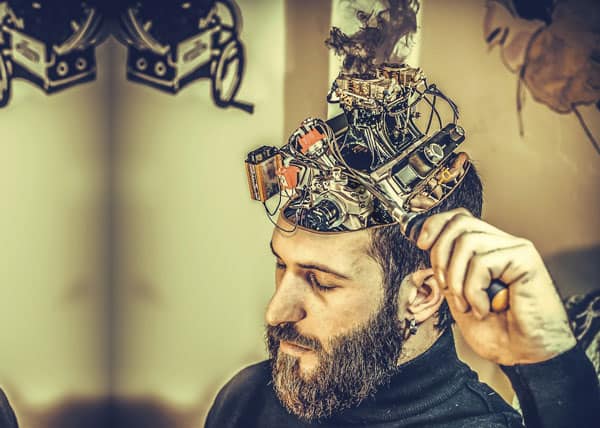
If there’s a Peak Brain Institute near you, then that’s even better because then you get the supervision.
You have to buy your own equipment because it is somewhat expensive. The consumer-grade EEG stuff still isn’t ready for prime time. The equipment cost a few thousand dollars. The nice thing is you’re set up to train yourself long-term. You can share the equipment with friends or families that become very cost-effective.
Do you get the gel?
A little bit but not dramatically. I mentioned for the brain maps, it’s a full head cap, but for the training days, it’s a couple of ear clips. You’ve got to find the right locations and then engage your locations within tolerance. We give out little cheats to find the most common location, but you’re typically putting one or two wires on your head. It’s pretty easy to go. At least for me it is, to put wires on my head and self-train. Even people with thick hair, it’s not a big deal to use a mirror and make apart and stick a wire there briefly while you’re training. People can do it themselves and certainly to each other or friends or family or stuff like that.
How many locations do you have? We’re here in Culver City, Los Angeles which is super convenient for me, fifteen minutes usually by car. It is pretty amazing for LA traffic.
We have two big flagships, Culver City and St. Louis on the West side in Clayton. We have some satellites. We have one in downtown Los Angeles in Pershing Square. We have one in downtown San Diego. We have one in Costa Mesa. We have a couple of qEEG acquisition stations, meaning technicians trained to record data and support remote trainers. We have one of those up in Portland. We have one of those in Malmo, Sweden who supports the Swedish and Copenhagen biohacker community. We end up with those services and then I do workshops. Two to four times a year I do the remote trainer workshops on location, either biohacker conferences or often a group of people will have me come out and do one for their group of people who want to self-train. Otherwise, people come to see us for a few days in one of our offices and then they can leave with equipment and knowledge and hit the ground running over time.
Where do we send folks to get more information?
Our main website is Peak Brain Institute or Peak Brain LA. It’s interchangeable. We’re also on Instagram, @PeakBrainLA and Twitter. We love if you want to check out our educational brain topics and brain content. We also love to know what your own brain challenges are. People have unique experiences of their own resources, their limits and their goals. We learn something from every person we work with. No matter how highly performing or maybe not they are. We’d love to know what your brain challenges are and your questions are. There’s a chat box on the website that goes to the backend of our company, our senior staff. You can ask sophisticated questions and know you’re getting a senior technician trainer or our COO answering questions or something. I would love to hear what you guys have to think about your brains if you have questions about neurofeedback.
Do you actually do neurofeedback training yourself?
I do. It’s a, “Who shaves the barber?” thing, where I don’t do nearly enough. I used to do a lot. In fact, one reason I am successful in getting a Ph.D. and running companies is because I used to have pretty profound ADHD at this point years ago and it was profound. It was one of the worst you’ve ever seen. I did about twenty sessions of neurofeedback after hours while working in a neurofeedback center. It managed to eliminate enough of the ADHD to go back and get a Ph.D. and become a lot more successful in my own resource utilization.
That’s PeakBrainInstitute.com. Thank you, Andrew, and thank you to our audience. Take some action. Do something to improve your brain because your brain is the most important organ in your body. That’s how you’re going to show up in the world is by improving your performance.
It’s one of the most changeable organs in the body too. You have every opportunity, not just responsibility but to take control of your brain health.
Thanks, everyone. We’ll catch you on the next episode.

